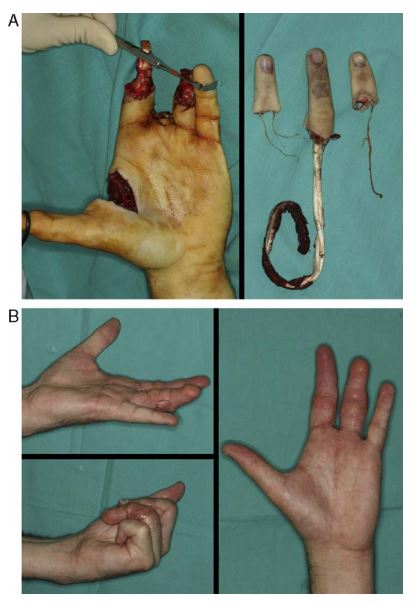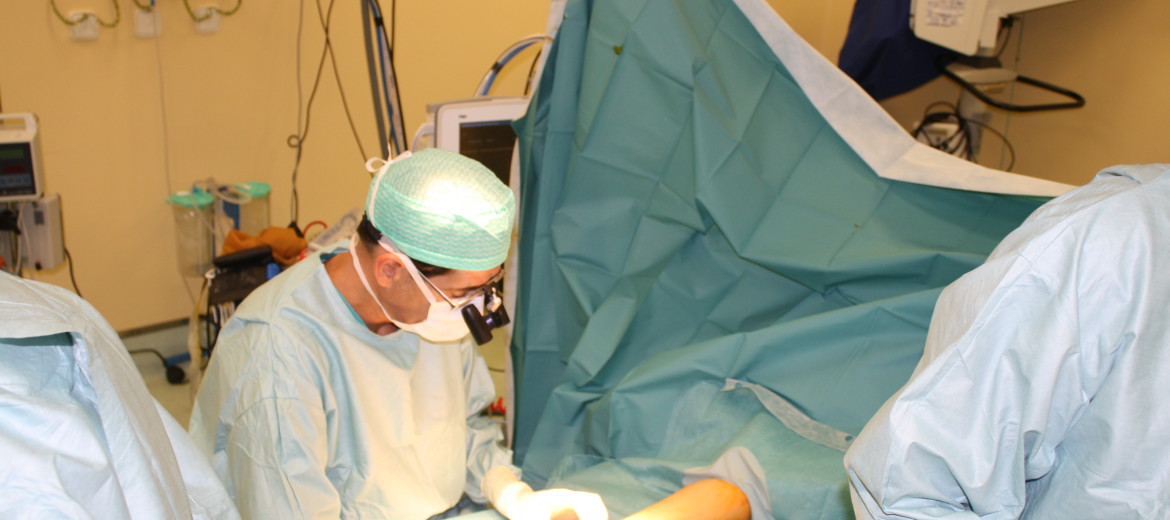Ниже вы можете прочитать перевод на английском языке человеком-переводчиком. У вас также есть доступ к испанскому оригиналу, щелкнув по флагу в правом верхнем углу. Эта ссылка дает вам доступ к версии автоматического перевода Google на русском: http://bit.ly/2J15I2U
Microsurgery opens up new horizons for the future to people who have had the misfortune to suffer traumatic amputations, as a result of work accidents or other types of contexts. The surgical ‘miracle’ that involves the reconnection of nerves, tendons or blood vessels with just the thickness of a hair – in the transfers of toes to hand, to name just one example – draws new perspectives.
The results obtained by Dr. Francisco del Piñal and his team go beyond the aesthetic aspects, returning functionality to the damaged limb and allowing, therefore, the return of patients to much of their previous occupations.
The time between trauma and intervention and the technique of the surgeon appear as the factors that separate the success of the failure in this type of operations. We talk about it with Dr. Del Piñal.
It is a complex situation and of shock for the patient, but, Dr., what should we do in case of suffering an accidental amputation?
Take the amputated parts, wrap them, and go to the nearest hospital as quickly as possible. Once covered, they can be placed on ice, but direct contact should be avoided, as they would freeze, which implies additional damage.
The arrival at the place of definitive treatment as soon as possible is key. It is not the same to start the surgery at eight hours after the amputation than two.
Are there differences in the procedure versus different types of amputation? Between a finger and a hand, for example.
Yes there are. Depending on the severity and extent of the amputation, we have to manage the ‘hurry factor’ in different ways. In the case of the fingers, we can reduce the time lost in waiting and traveling by ambulance, placing them in the cold – always avoiding that contact with the ice already mentioned – and going to the medical center by other means.
However, for major amputations – arms, hands, etc. – time is even more vital, every minute counts. Even in cold ischemia (clinical cooling of an organ or limb without blood supply), nothing can be done after six hours. On the other hand, in the case of the fingers it is feasible to hold twelve, even 24 hours in some cases.

Already in the operating room, what is the sequence of events?
The main objective is to connect an artery so that the blood comes back and a vein for it to come out. With this step we give ‘life’ to the amputated part. However, what we want is to return the functionality. For this we have to fix all the affected structures in the proper order.
Normally, at the beginning we try to stabilize the bone with needles, wires, screws (…) with what is convenient at every moment. Next, we connect the flexor and extensor tendons; then, nerves, arteries and veins.

Allow me to interrupt you, Dr. It really attracts attention that it is possible to reconnect such ‘small’ elements (…)
It is true. In fact we are able to ‘reconnect’ pipes of negligible thickness. How do we get the blood back and not come out again? Well, from micro-points of welding. We get to apply between 8 and 10 of these points in a vessel of only one millimeter.
This succession of points allows the spaces between them to be reduced, in such a way that the body itself coagulates them without obstructing the light of the vessel, that is, the blood flow. Avoiding possible obstruction is, among other factors, what forces us to increase the number of points in each area.
In a way, what you do is to help the body, isn’t it?
Indeed. Without our intervention, the body closes the vessel, obstructs it. If we put one vessel in front of another, the blood would not circulate; it would coagulate so much that it would close the channel. This is what happens when we suffer a hemorrhage, in the artery of an arm to mention a case, the blood stops flowing. Otherwise, any wound would exsanguinate us.
Related content:
 es
es en
en fr
fr it
it ru
ru zh-hans
zh-hans
